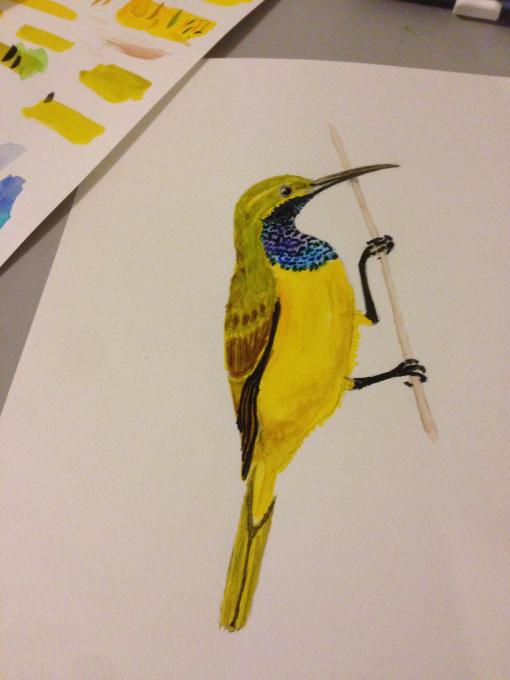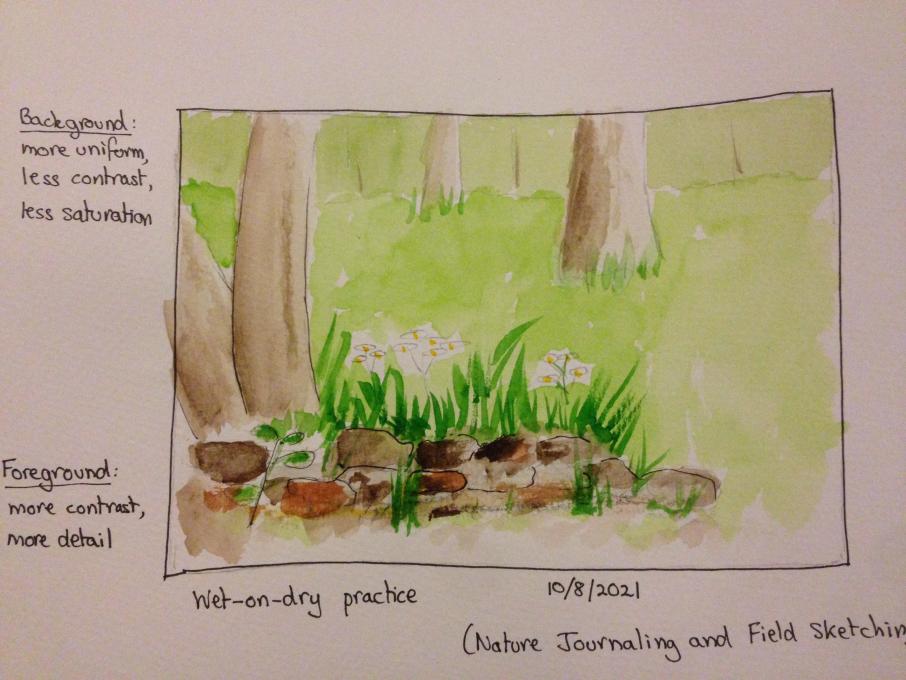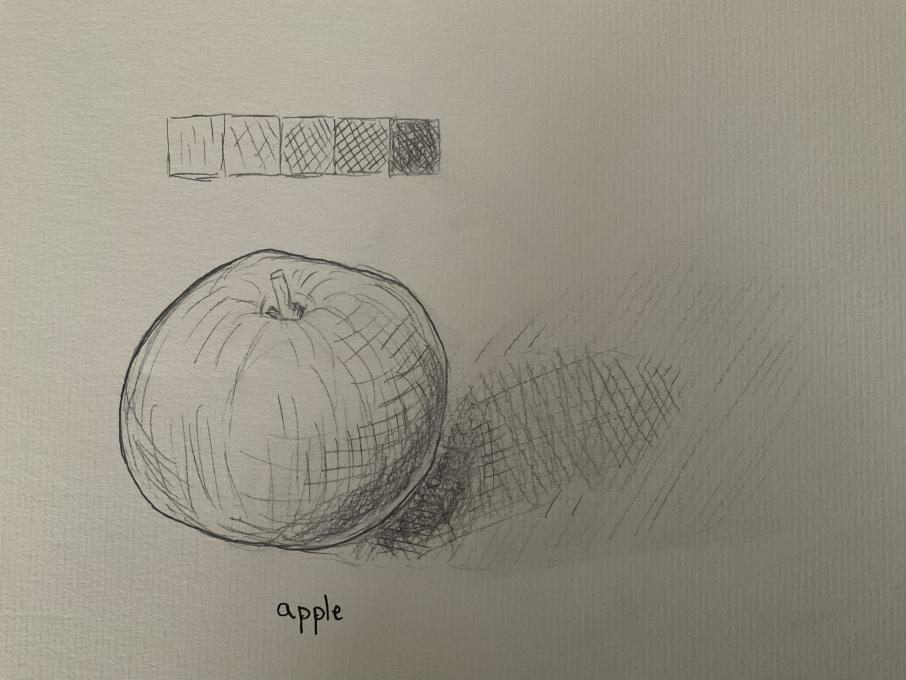Dominique
Forum Replies Created
-
DominiqueParticipantThanks for sharing.in reply to: The Power of Reflection #834694
-
DominiqueParticipant

 Practice painting as realistically as possible (for me) based on photo of Olive Backed Sunbird from eBird. This is a bird I often see around home, but they are very active. After spending a fair bit of time on the “realistic” version, just for fun I decided to do quick gesture sketches and add some of the left-over paint. in reply to: Filling Your Sketches with Color #834589
Practice painting as realistically as possible (for me) based on photo of Olive Backed Sunbird from eBird. This is a bird I often see around home, but they are very active. After spending a fair bit of time on the “realistic” version, just for fun I decided to do quick gesture sketches and add some of the left-over paint. in reply to: Filling Your Sketches with Color #834589 -
DominiqueParticipantI like the mood you have captured with the colours.in reply to: Filling Your Sketches with Color #834498
-
DominiqueParticipantIt looks like that bird had good camouflage, well done just to spot it in the trees! Nice painting. I’m sure it helps you know the bird so well.in reply to: Filling Your Sketches with Color #834497
-
DominiqueParticipantI love the way you have faded the lines towards the left as you go away from the main subject. Same thing at bottom of the feeder. Nicely done.in reply to: Filling Your Sketches with Color #834437
-
DominiqueParticipantIt was fun to try put these techniques, there is now so much more to learn and experiment with! I rushed the duck reflection, I think even a casual looking painting needs lots of care !

 in reply to: Getting Comfortable with Watercolor #834436
in reply to: Getting Comfortable with Watercolor #834436 -
DominiqueParticipantGreat the way text runs through the plant stems, makes it more complete.in reply to: Opening Your Senses #826702
-
DominiqueParticipantI love the way your handwriting (penmanship style) is evocative of the flight of birds.in reply to: Opening Your Senses #826699
-
DominiqueParticipantI like the fact that there is empty space on the page still and that you have observations at different scales.in reply to: Opening Your Senses #826698
-
DominiqueParticipant
@Erica I love the way you have conveyed movement for the white bird by varying the line thickness.
in reply to: Opening Your Senses #826697 -
DominiqueParticipant
 I found it very difficult! Need more practice... the hardest bit is how to show the difference between details of the object (coloured lines on the apple) and the hatching to show darker zones. in reply to: Illustrating the 3D World #826372
I found it very difficult! Need more practice... the hardest bit is how to show the difference between details of the object (coloured lines on the apple) and the hatching to show darker zones. in reply to: Illustrating the 3D World #826372 -
DominiqueParticipant
 in reply to: Jump Right in! #825025
in reply to: Jump Right in! #825025 -
DominiqueParticipantIm not yet at all confident with the media (used pencil, ink pen, watercolor pencils), but I enjoyed the exercise. I used it to learn about the parts if a bird (mainly the feathers). It was challenging to convey exact feathers as well as feeling of feathers ( some look fluffy and I was not able to convey that). It was good to have the photo so able to take time to do the drawing. I spotted many things I probably would not have seen in field, unless the bird is very cooperative and close by!in reply to: Jump Right in! #825023
-
DominiqueParticipant1 I discovered nature journaling just recently, having taken an interest in birds during pandemic lockdown (bird watching from my balcony and getting familiar with garden birds). 2 I’m impressed with the beauty if the journals and i really like it when the journal shows landscapes and plant as well as animals. It’s a good idea to show the whole scene and also small details (like a flower bud or bird’s beak) i.e. show things at different scales. I’ve only just started journaling with plants and birds, but I want to try to include landscapes and rocks (geology). So far I’ve been using ink pen and watercolor pencils, and I look forward to gaining confidence through this course.in reply to: Style Your Journal Your Way #824985
-
DominiqueParticipantIve learnt a lot from this course and I plan continue learning with some of the other courses. I’m going to try to document what I see in a nature journal, adding to what I see with information from eBird and other sources.in reply to: Activities: Helping Birds in Your World #824564
-
DominiqueParticipantI always like jotting things down but now, after this course, I plan to do that in a more systematic way. I’m a birding beginner and using the pandemic lockdown time to try some new hobbies. I’ve been observing neighbourhood birds regularly. Merlin and eBird are good place to start and I’m impressed with the functionality (local maps, weekly sightings etc)... a while new birding world has opened up to me!in reply to: Activities: Keeping Track of Your Birdwatching #823599
-
DominiqueParticipantI’m also considering the field journal course after this one. I thunk sketching forces you to look closely, ie to do better observations and that course sounds fun.in reply to: Activities: Keeping Track of Your Birdwatching #823598
-
DominiqueParticipantI’ve spent a few hours bird watching around my home. Spotted a green pigeon flying in and out of a leafy tree with what I presume is nesting material (like twigs) - each time flying an almost identical path to source area. I identified the bird as Little green pigeon, but seeing it better today as it perched on an overhead wire i noticed it had red eyes - so the fist ID was wrong. It is a Pink-necked green pigeon. Before doing this course I would not have spotted that difference (the birds are quite similar to a beginner).in reply to: Activities: Local Bird Exploration #823171
-
DominiqueParticipantActivity 4: Olive-backed sunbird: it is a small bird (smaller than a sparrow) with dark olive green back whereas the underside (belly) is bright yellow. the beak is slender and curves downwards. The male has an iridescent dark throat and upper breast (like a long bib), whereas the female is duller overall and doesn’t have that iridescent dark marking. Common garden bird in Malaysia, and it moves fast and feeds on flower nectar.in reply to: Activities: Bird ID Practice #822465
-
DominiqueParticipantActivity 1: Living in Malaysia, I couldn't avoid voting for the Hornbill! Their behaviour during breeding is incredible (the female remains enclosed in a natural cavity while the male provides food for her and the chicks). The Rhinoceros hornbill actually figures on the coat of arms of the state of Sarawak (on which the upturned curved "casque" on the hornbill's bill is somewhat exagerated!). I wanted to share the image here, but wasn't confident re copyright status.in reply to: Activities: Exploring Birds #822350

 Practice painting as realistically as possible (for me) based on photo of Olive Backed Sunbird from eBird. This is a bird I often see around home, but they are very active. After spending a fair bit of time on the “realistic” version, just for fun I decided to do quick gesture sketches and add some of the left-over paint.
Practice painting as realistically as possible (for me) based on photo of Olive Backed Sunbird from eBird. This is a bird I often see around home, but they are very active. After spending a fair bit of time on the “realistic” version, just for fun I decided to do quick gesture sketches and add some of the left-over paint. 

 I found it very difficult! Need more practice... the hardest bit is how to show the difference between details of the object (coloured lines on the apple) and the hatching to show darker zones.
I found it very difficult! Need more practice... the hardest bit is how to show the difference between details of the object (coloured lines on the apple) and the hatching to show darker zones. 